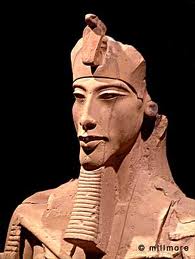Author’s Note
Edwin Smith, a colourful character, is remembered for something he did one hot afternoon in a bazaar in Luxor, Egypt in 1862. He bought a papyrus that turned out to be one of the oldest medical texts in the world.
I first came across the Edwin Smith Papyrus some twenty years ago. I was studying Egyptology at the time, learning to read the hieroglyphs at night, because during the day I was a practising barrister and spent most of my days in court. Archaeology was my passion and has remained so to this very day.
Our professor used this unique text as an illustration of the extraordinary achievements of the Ancient Egyptians. The 4.6 metre long papyrus is written right to left in hieratic, a cursive form of hieroglyphs. Experts believe it was composed in about 1500 BC.

However, what is particularly fascinating about the papyrus is that it is now believed to be a copy of a much older text dating back to the Old Kingdom. And it doesn’t stop there. Some scholars maintain that the true author of the text was none other than Imhotep, a remarkable renaissance man of the Old Kingdom who lived in around 2600 BC, and rose to high office under the pharaoh Djoser. Imhotep was a gifted architect, engineer, high priest and physician who, two thousand years after his death, was deified and became the god of medicine and healing. Centuries later, the ancient Greeks associated him with Asklepios, the god of medicine.
What makes this text so unique is the fact it describes forty-eight case histories based on rational anatomical, physiological and pathological observations, without looking at them through the eyes of magic, which was the accepted way to deal with disease, injury and trauma at the time.
Fascinated by the text, I immersed myself in the papyrus, which was translated by Breasted, an eminent Egyptologist, in 1930. That was how I came across case 46.
Case 46 deals with ‘bulging tumours of the breast … large, spreading and hard …’ A more accurate description of breast cancer is difficult to imagine. For the first time in human history, the Emperor of Darkness – cancer – made its appearance in literature.
Every case study in the papyrus is followed by a discussion of its treatment except in case 46 for which, according to Imhotep, there was none.
Cancer is an ancient disease. Progress in medical research, especially in recent years, has been breathtaking. We have come a long way, yet have we come any closer to conquering this powerful, malevolent disease, or do we have to agree with Imhotep’s prognosis 4500 years ago – that in many cases, there is no cure?
This question has been asked countless times through the ages and has plagued the medical profession for centuries. The search for an answer became the inspiration for this book.
Gabriel Farago
Leura, Blue Mountains, Australia






